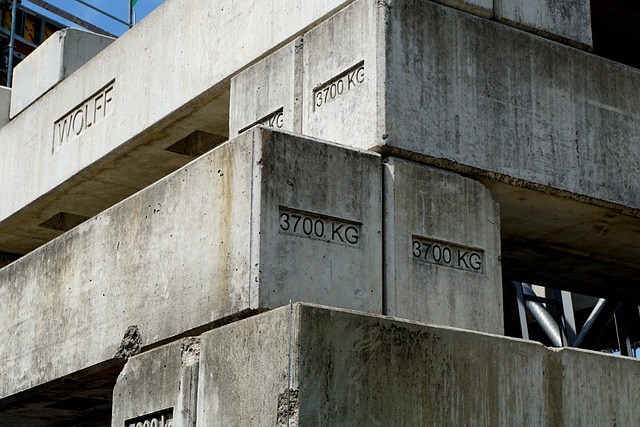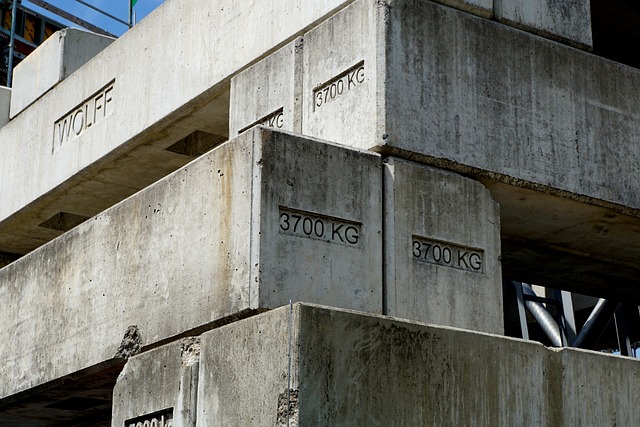Foundation cracks caused by various factors require professional diagnosis and targeted repairs. A Foundation Inspection is crucial, identifying crack types (hairline, diagonal, vertical, horizontal) and root causes like soil conditions or structural defects. This guides selection of suitable repair methods – structural (carbon fiber sheets, epoxy injections) or cosmetic (crack sealing). Warrantied repairs ensure long-term stability, with specialized contractors using advanced techniques for accurate diagnoses. Post-repair maintenance involves regular inspections, addressing water issues, and sealing vulnerabilities to prevent future cracks.
Crack repair on your home’s foundation is crucial for structural integrity and longevity. Understanding common causes of these cracks, from settlement to soil movement, is essential for effective solutions. A comprehensive foundation inspection is key to identifying the root cause and choosing the right repair method, whether it’s carbon fiber wrapping or epoxy injection. This article guides you through the process, emphasizing the importance of professional expertise and warranties for peace of mind. Start here for a robust understanding of securing your home’s base.
Understanding Foundation Cracks: Causes and Types

Foundation cracks can be a serious issue for any homeowner, but understanding their causes and types is essential for effective repair. These cracks often result from various factors, such as soil movement due to temperature changes, settlement of the building on uneven ground, or structural issues within the foundation itself. Identifying the specific type of crack is crucial for determining the appropriate repair method.
There are several common types of foundation cracks, including hairline cracks, which are usually minor and may result from normal concrete shrinkage; diagonal cracks, often indicative of differential settlement; vertical cracks, typically caused by soil pressure or underlying structural problems; and horizontal cracks, a sign of severe movement or instability in the foundation. A comprehensive foundation inspection is key to assessing these issues and selecting the most suitable repair approach with a warranty for long-term peace of mind.
The Role of a Foundation Inspection in Crack Repair

A Foundation Inspection is a crucial step before, during, and after crack repair. It involves a thorough assessment of the structural integrity of your foundation, identifying any potential issues or weaknesses that could lead to further cracks. This process includes visual examinations, moisture content analysis, and sometimes, non-invasive testing like ground-penetrating radar (GPR). By identifying these problems early, professionals can provide targeted crack repair solutions, ensuring long-lasting stability and peace of mind for homeowners.
During the inspection, experts look for signs of settlement, heave, or movement that could cause cracks to appear or widen. They also assess the type and severity of existing cracks, as well as the underlying causes, such as poor soil conditions, inadequate drainage, or structural defects. This comprehensive evaluation guides the repair process, allowing for tailored solutions that address not just the visible cracks but also the root causes, thereby offering a warranty-backed, long-term fix.
Common Methods for Foundation Crack Repair

Foundation cracks can be a serious issue, but luckily, there are several common methods for repair that can restore structural integrity and prevent further damage. The first step is often a thorough foundation inspection to assess the extent of the damage and determine the best course of action. This may involve non-destructive testing techniques such as moisture meters and crack monitoring systems.
Once the cracks have been identified, repairs can be categorized into two main types: structural repair and cosmetic repair. Structural repairs focus on reinforcing and stabilizing the foundation, using materials like carbon fiber sheets or epoxy injections to fill and strengthen the cracks. Cosmetic repairs, on the other hand, address the visible aspects, sealing and smoothing the cracks for a neat appearance.
Choosing the Right Materials for Long-Lasting Fixation

When it comes to repairing foundation cracks, selecting the appropriate materials is paramount for achieving a long-lasting fix. A comprehensive foundation inspection should be conducted to identify not only the extent of the damage but also the specific type of crack and its underlying cause. This knowledge allows for the choice of materials that align with the repair needs, ensuring durability and compatibility.
For instance, epoxy injections are ideal for narrow cracks resulting from settling or movement, as they offer exceptional strength and adhesion. On the other hand, hydraulic cement is a versatile option for broader cracks due to its ability to fill gaps and prevent further erosion. Choosing the right materials not only guarantees a solid repair but also extends the life of your foundation, saving you from costly future repairs.
Steps Involved in Foundation Crack Repair Process

The foundation crack repair process begins with a thorough foundation inspection. This involves assessing the extent and type of cracks, identifying their causes, and understanding the overall health of the structure. Professional inspectors use advanced techniques to detect even subtle signs of damage that could indicate larger structural issues.
Once the inspection is complete, a tailored repair plan is devised. This includes choosing the appropriate method for crack filling or patching based on crack width, depth, and pattern. Using high-quality materials and expert application techniques ensures long-lasting results. A warranty is often provided to safeguard against future cracks and give homeowners peace of mind.
Benefits of Professional Crack Repair with Warranty

When it comes to foundation crack repair, opting for professional services with a warranty offers numerous advantages. One of the key benefits is the expertise and experience that specialized contractors bring to the table. They have the training and tools to conduct thorough foundation inspections, identifying not just visible cracks but also potential underlying issues. This proactive approach ensures that any repairs are comprehensive and long-lasting.
Moreover, a warranty provides peace of mind, assuring homeowners that their investment is protected. Repairs are often complex, and having a guarantee means that if there are unforeseen problems or the crack reoccurs within the covered period, the contractor will take responsibility for rectifying it without additional cost. This level of security can save homeowners time and money in the long run, ensuring their home’s structural integrity is maintained.
Selecting a Reputable Contractor for Foundation Repair Services

When considering foundation crack repair, selecting a reputable contractor is paramount. Start by requesting and verifying their licensing, insurance, and warranty policies to ensure they meet industry standards and can stand behind their work. Reputable contractors often offer comprehensive services, including a thorough foundation inspection, to accurately diagnose the issue and provide tailored solutions.
During your search, gather reviews from past clients to gauge their satisfaction with the contractor’s professionalism, communication, and workmanship. You can also ask for references to speak directly with previous customers about their experiences. This due diligence ensures you partner with a trustworthy expert who prioritizes quality and longevity in their repairs, backed by a warranty that offers peace of mind.
Post-Repair Maintenance: Ensuring Longevity and Stabilization

After repairing cracks in your foundation, proper maintenance is crucial for longevity and stability. A comprehensive post-repair inspection should be conducted to assess the extent of damage and identify any potential issues. This step involves a detailed examination of the repaired area, including the crack itself, surrounding walls, and the overall structural integrity of the foundation.
Regular monitoring and maintenance are essential to prevent future cracks from developing. This includes addressing any signs of water intrusion, as moisture can weaken the foundation over time. Implementing measures like proper drainage systems, sealing vulnerabilities, and maintaining a consistent level of humidity can significantly contribute to the stability of your foundation. By combining expert repair services with diligent post-repair care, you ensure that your foundation remains robust and secure for years to come.
